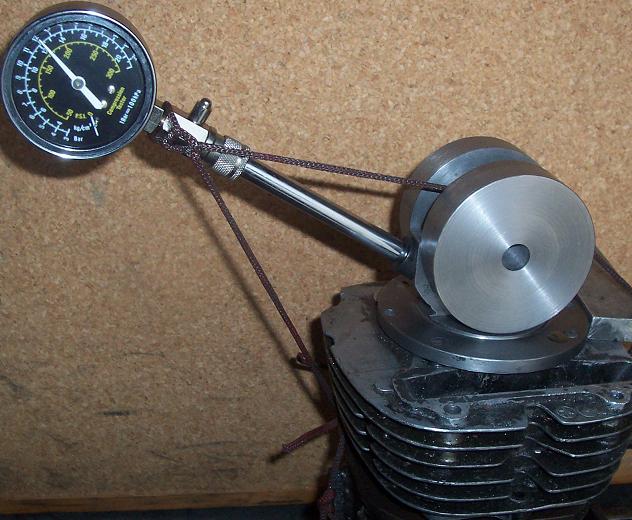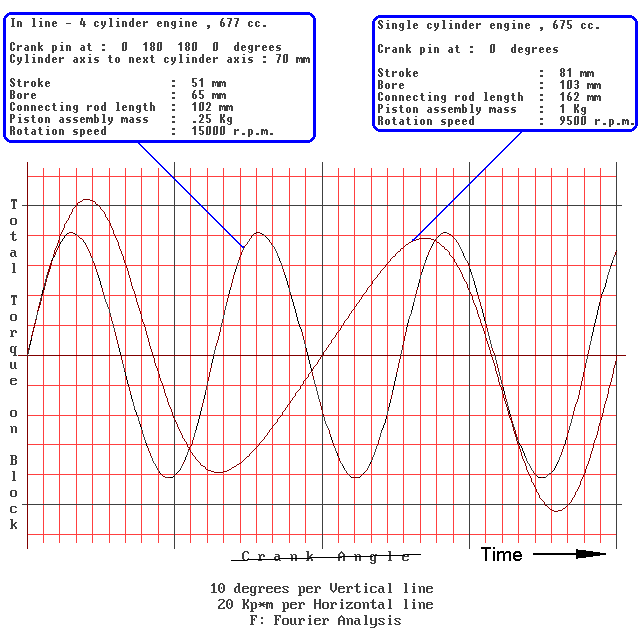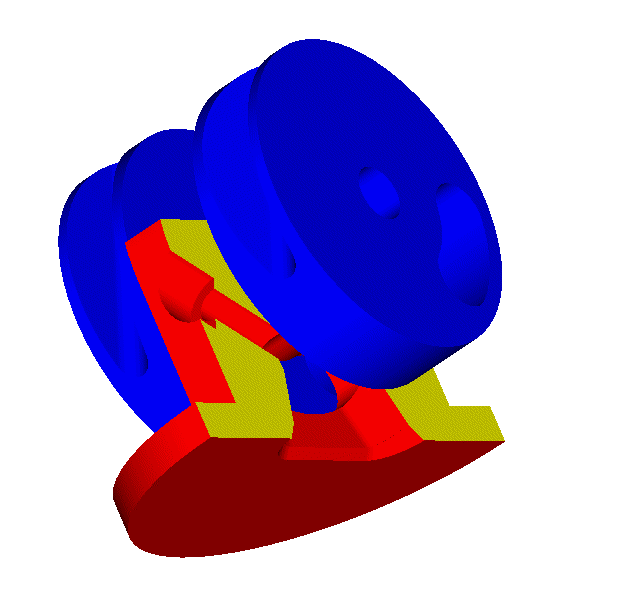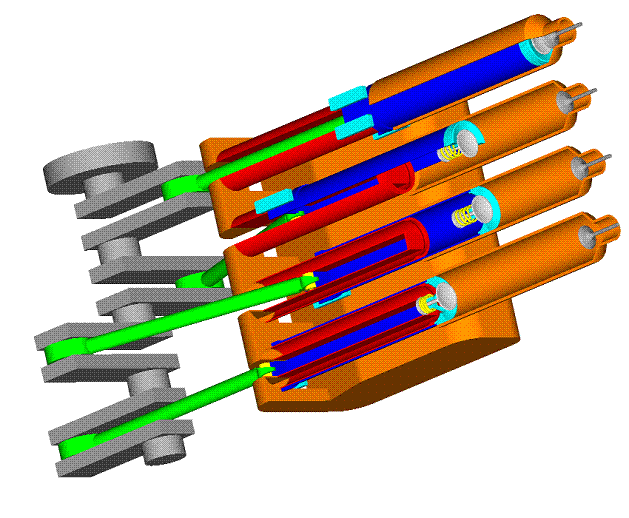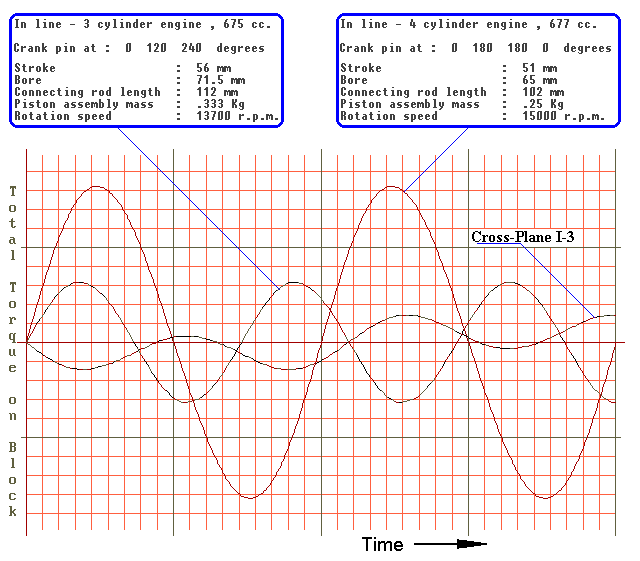Hello Tommy Cookers.
The theory has been already and analytically explained in the previous posts.
I don’t think there is something to be added.
It is simple mathematics. And there is no way “to argue with mathematics”.
Here is a partial quote from the link of Brian Coat (
http://articles.sae.org/5586/ )
It confirms everything the theory predicts.
“His (i.e. Furusawa’s) ideal would have been a multicylinder, even-interval-firing engine with minimum fluctuations in revolutions, thereby getting the maximum amount of propulsion without inducing tire slippage. Ultimately, he added, something like an electric motor.
He said that uneven-interval firing itself was not the primary purpose of his design and development team, but that the 90° crankshaft was a fruit of strenuous work in minimizing fluctuations in engine revolutions. The natural result was that combustion intervals had become uneven because of the crankshaft design.
Furusawa’s team then pushed the uneven-interval-firing envelope to an extreme in one variation of the M1 engine that had all combustion occurring in a single revolution, the “Ultimate Long Bang,” Furusawa described. The exercise produced a change in the bike’s total traction, but no improvement in lap times.
“Whichever the engine configuration may be, inline or V-formation, targeted weight distribution should be no different, about 50/50. It could be a fraction of that at either end, but I am not going into that,” Furusawa said. “I believe the inline engine is more advantageous when fitted within a shorter wheelbase, which is more agile. In the V-configured engine, the rear bank tends to shift the mass rearward, which must be offset by lengthening the wheelbase.”
“What the rider wants is combustion torque proportionate to the throttle work, not inertia torque,” said Furusawa, who drew an analogy to signal-to-noise ratio (SNR), an electrical engineering term. “Combustion torque is a signal, and inertia torque is noise. Unfortunately, noise increases proportionately to the square of revolutions, greatly deteriorating the SNR.”
A typical road vehicle inline four may go up to about 7000 rpm on the high end, which is well within the engine’s effective combustion torque zone. In the MotoGP application, winding to 15,000 rpm, inertial torque would be significant. The rider must make best use of the signal buried deep within a large noise, and that would do no good to the essential connectivity between the throttle and rear tire.
His theoretical SNR graph shows a 180° engine model at wide-open 15,000 rpm, assuming no fluctuations in rpm, in which noise/inertia torque is greater than signal/combustion torque. The compounded torque value that drives the motorcycle is, therefore, reduced. In the 90° crank engine, noise/inertia torque is almost negligible; what little is there is generated by the leaning connecting rods. Net driving torque nearly matches the value of combustion torque and is efficiently transmitted to the rear tire at the rider’s command.
Verification of the Yamaha SNR theory was performed by directly measuring fluctuations in rear tire revolutions during cornering using frequency analysis. In the 180° crank YZR-M1, speed fluctuations by second order in revolutions occurred regardless of throttle opening. The 90° crank version, on the other hand, displayed speed fluctuations of the second order in only 1.5 revolutions when the throttle was opened. Furusawa concluded that the 90° crank engine transmitted the signal/combustion torque singularly and effectively to the driving wheel.
Furusawa recounted racer Valentino Rossi’s first reaction to the YZR-M1 in January 2004. Rossi was the World MotoGP champion in 2002 and 2003, riding for Honda. The young Italian had just switched camps to Yamaha, widely rumored to prove that it was not the song but the singer.
Furusawa put Rossi on both the 180° and 90° crank YZR-M1. On the 180° machine, he commented that it was as power-oriented as his previous Honda mounts. On the 90° crank version, he responded, “Very sweet!” The bike responded precisely to his throttle command, producing optimal rear-wheel traction during cornering, and demanded less physical strain on a long run.
END OF QUOTE
In the first paragraph of the Quote it writes:
“(The) ideal would have been a multicylinder, even-interval-firing engine with minimum fluctuations in revolutions, thereby getting the maximum amount of propulsion without inducing tire slippage.”
If this primary transmission:
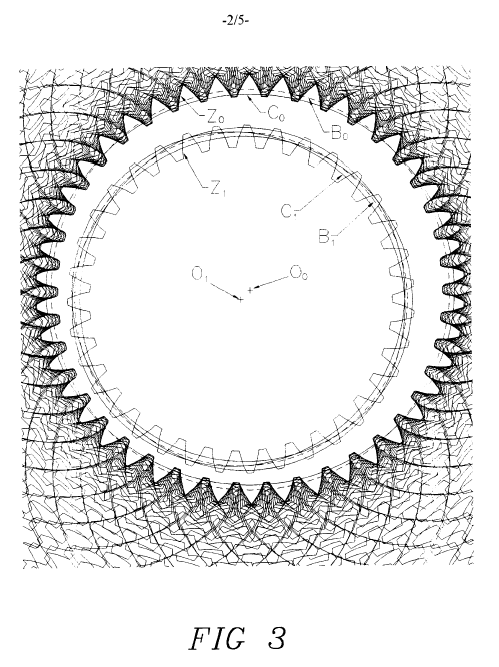
were used in a conventional I-4 four-stroke (plane crankshaft, even firing), the inertia torque would not be allowed to arrive to the transmission.
It is a mechanism that, without killing energy, keeps the “bad inertia torque” away from the rear tire.
With the above transmission, the angular speed of the flat / plane crankshaft fluctuates, while the transmission and the rear tire rotate at constant angular speed.
It is the ideal moto-GP engine according Furusawa (the technical director of Yamaha).
I don’t need to see it in practice.
The theory and the mathematics say it works.
Practice will just confirm the theory.
The funny thing is that the gear wheel with the uneven / strange teeth is quite easy to be made with the existing CNC cutting machines (say, with a wire EDM CNC machine). It is a matter of a couple of hours, if you know what you are doing. The other gearwheel is a conventional one.
But who listens?
Thanks
Manolis Pattakos
